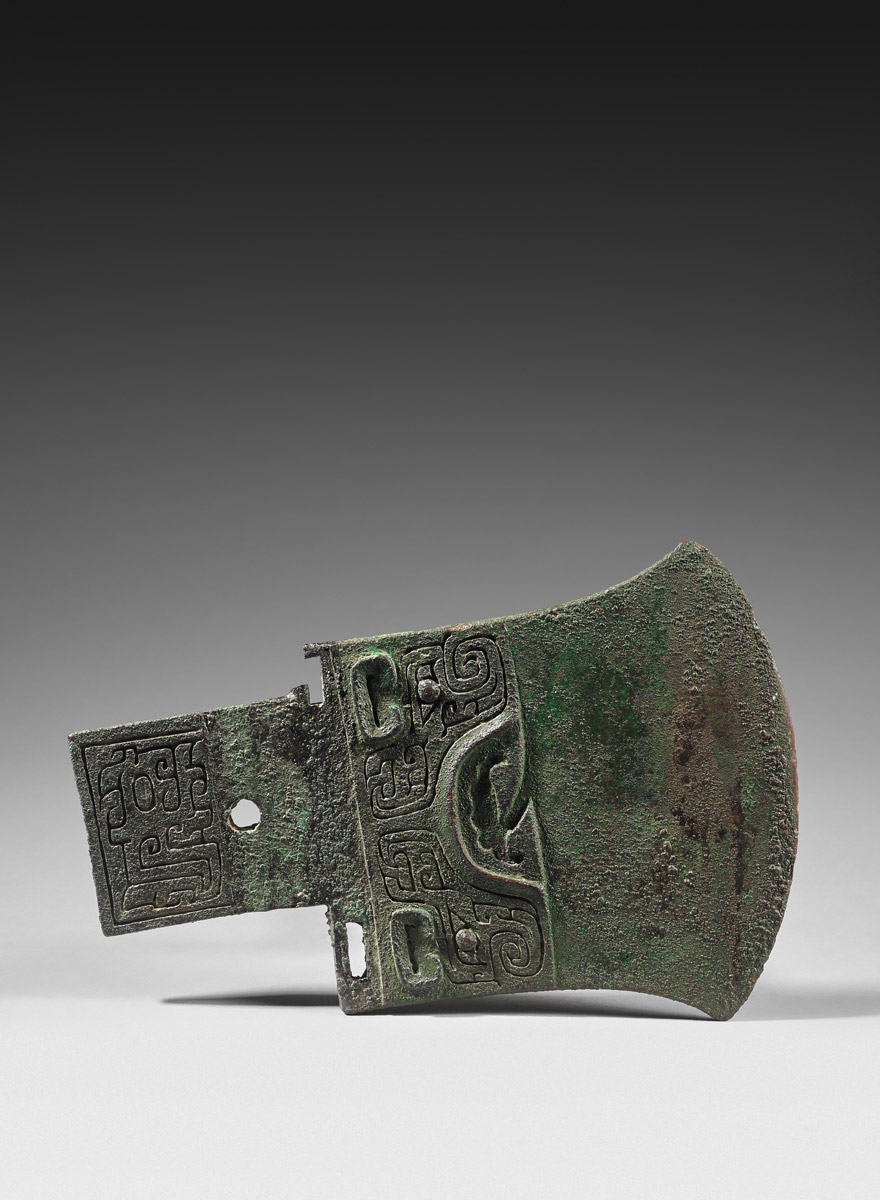
The tombs of ancient China hide many arms, including axes (Yue) used both for warfare and sacrifices. This one is typical of the late Ayang period (circa 1300-1050 B.C.E.).
A register at the top of the blade shows two “dragons” whose monstrous faces, turned outward, are open-mouthed revealing monstrous fangs. The haft is divided into two parts: a lower part originally hidden by a wooden handle whose attachment grooves and hole are easy to see, and an end bearing the silhouette of a dragon.
We can make a detailed comparison between this axe and several other Yues. First of all, the one discovered in the tomb of Queen Fu Hao in 1976 in Yinxu (Anyang) at the site of the ancient capital of the Shang kings (Yinxu …, 1980, pl.69, fig. 1 ; p.106, fig. 66-2) and today conserved in the National Museum of China (A Journey… , 1997, vol.1, pl. 136-1). On this artifact, the haft bears a taotie mask, a mosaic of turquoise stones which indicates the high status of its owner.
Similar axes are reproduced by Max Loehr (1956, pl, II, III V and VIII), others are listed in museums, for example (listing only those in Europe) in the Meidaozhai Collection, today in the Museo d’Arte Orientale of Torino (Pirazzoli-t’Serstevens, 2002, vol.1, p. 136, No. 72, inv. B 2) and in the ancient collection Lionel Jacob collection, today in the Musée des Arts Asiatiques-Guimet (Jacob, 1991, p. 88-89, No. 37).
Provenance: acquired between the two World Wars ; Neuilly s/ Seine, coll. David David-Weill (Inv. D.W. 2588), thence by descent.
-----------------------------------------------
Bibliography:
A Journey into China’s Antiquity, National Museum of Chinese History, Vol 1., Beijing : Morning Glory Publishers, 1997
Jacob, Lionel, Arts de la Chine ancienne. Formation de la culture chinoise du Néolithique à la formation de l’Empire, Thonon les Bains : L’Albaron, 1991, vol.1.
Pirazzoli-t’serstevens (Dir.), L’Arte per la vita nell’Aldilà Capolavori di arte antica cinese delle collezione Meidaozhai, Vol 1 Il Neolitico e l’Età del bronzo. Turin : Fondazione Giovanni Agnelli, 1999.
Yinxu Fu Hao mu. Beijing : Wenwu Chubanshe, 1980.
Price On Request
|

